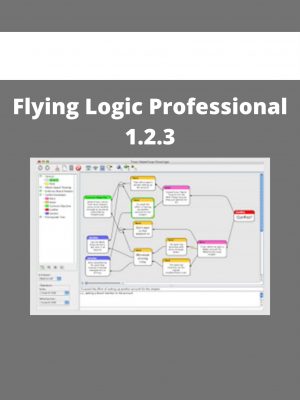Terry Rzepkowski – Post-op Rehab Workshop, Evaluation & Treatment Strategies for Shoulder, Hip, & Knee
$300 Original price was: $300.$113Current price is: $113.
Shopping Instructions:
- DISCOUNT 15% : SHOP15
- Product Delivery: Within 1 – 12 hours after purchase.
The post-op rehab implications of these various surgeries will be discussed in hands-on functional rehab labs, where you’ll practice cutting-edge interventions that can be applied in the clinic.
Terry Rzepkowski – Post-op Rehab Workshop, Evaluation & Treatment Strategies for Shoulder, Hip, & Knee
Learn to identify common orthopedic problems of the shoulder, hip, and knee and understand the various surgical techniques for repair. Review the latest surgical techniques, including video analysis of surgical procedures that demonstrate changes before and after intraoperative repair. The post-op rehab implications of these various surgeries will be discussed in hands-on functional rehab labs, where you’ll practice cutting-edge interventions that can be applied in the clinic.
This comprehensive training workshop includes evaluation and intervention strategies for:
- Shoulder RTC tears
- Total shoulder replacement
- Glenoid labrum tear
- Acetabular labral defect
- Hip fracture
- Total hip replacement
- Meniscal injury
- Osteochondral defect
- ACL tear
- Total knee replacement
- Perform hands-on clinical assessments to identify structural pathology of shoulder, hip, and knee conditions
- Perform assessment techniques to identify predisposing factors to the injury of shoulder, hip, and knee
- Develop a personalized risk-specific treatment approach to minimize functional injury predispositions
- Review the anatomy and biomechanics of the shoulder, hip, and knee
- Discuss prognosis, treatment duration, and outcome for each type of orthopedic surgical procedure
- Perform hands-on functional rehab techniques for the shoulder, hip, and knee
- Design functional home exercise programs in appropriate staged progression
SHOULDER
PREVENTION EXAM
- Postural positioning of the head and scapula
- Impingement exam
- Neer
- Hawkins/Kennedy
- Crossover
- Ergonomic accommodations to decrease impingement
- HANDS-ON LAB
ANATOMICAL AND BASIC BIOMECHANICS
- Anatomy of the Shoulder
- Anatomy review of joint structure
MEDICAL DIAGNOSES AND SURGICAL INTERVENTIO
- Comparative normal versus diagnostic imaging (X-ray, MRI)
- Shoulder RTC tears
- Shoulder labral defects
- Shoulder Fx
- Total shoulder replacement: anatomical and reverse
- HANDS-ON LAB
CLINICAL DIAGNOSIS
- Correlate mechanism of injury
- Damage exam
- RTC
- Glenoid labrum
- Biceps long head
-
HANDS-ON LAB
INJURY PREVENTION AND DEVELOPING A JOINT-SPECIFIC TREATMENT PLAN
- Establish proximal scapular stability progress to distal mobility
- Progression:
- Flexibility considerations
- Manual scapular stabilization exercises
- RTC manual ex with scapular integration
- Dynamic distal stabilization exercises
- Home exercise with resistance band
-
HANDS-ON LAB
HIP AND KNEE
PREVENTION EXAM
- HIP: Posture of the pelvis sagittal/frontal plane
- Predisposing elements
- Glut medius weakness
- IT band test (Ober’s)
- Hip flexor (Yeomans’s, ELY)
- Hamstrings (SLR)
- HANDS-ON LAB
- KNEE: Dynamic positioning in movement
- Dynamic Valgus
- Ligament dominance
- Quad dominance
- Leg dominance
- Ankle position/foot wear
- HANDS-ON LAB
Would you like to receive Terry Rzepkowski – Post-op Rehab Workshop, Evaluation & Treatment Strategies for Shoulder, Hip, & Knee ?
ANATOMICAL AND BASIC BIOMECHANICS
- Anatomy of the hip/knee
- Anatomy review of each joint structure
- Surgical procedure videos
MEDICAL DIAGNOSES AND SURGICAL INTERVENTION
- HIP: Comparative normal versus diagnostic imaging (X-ray, MRI)
- Acetabular labral defects
- Hip fracture
- Total hip replacement (approaches: posterior, lateral, anterior)
- KNEE: Comparative normal versus diagnostic imaging (X-ray, MRI)
- Meniscal Injury (menisectomy vs repair)
- Osteochondral defect
- ACL repair (Hamstring vs Patellar Tendon)
- Total Knee replacement (Traditional, Subvastus, Bipolar, Unipolar, Custom fit)
CLINICAL DIAGNOSIS
- HIP: Correlate mechanism of injury
- Tissue exam
- Piriformis
- Faber
- Hip Scour
- HANDS-ON LAB
- KNEE: Correlate mechanism of injury
- Tissue exam
- Ligament Medial-Lateral
- Ligament Anterior-Posterior
- Meniscal damage
- HANDS-ON LAB
INJURY PREVENTION AND DEVELOPING A JOINT-SPECIFIC TREATMENT PLAN
- HIP: Balance weakness and flexibility
- Flexibility considerations
- Proximal closed chain stability exercises
- Hip and core exercises
- Home exercises for dynamic functional integration
- HANDS-ON LAB
- KNEE: Incorporate Neuromuscular (N-M) retraining
- Flexibility considerations
- Functional closed chain exercises
- Address ligament/muscular dominance
- Sensory integration in balance progression
- N-M integration in jump mechanics
- Home exercises for dynamic functional integration
- Advanced plyometric training for the LE
- HANDS-ON LAB
Related products
NLP & Hypnosis
NLP & Hypnosis
NLP & Hypnosis
NLP & Hypnosis
NLP & Hypnosis
NLP & Hypnosis
NLP & Hypnosis
Joseph Cohen – The SelfHacked Secrets To Understanding Why You Are Sick And How To Get Well
NLP & Hypnosis












